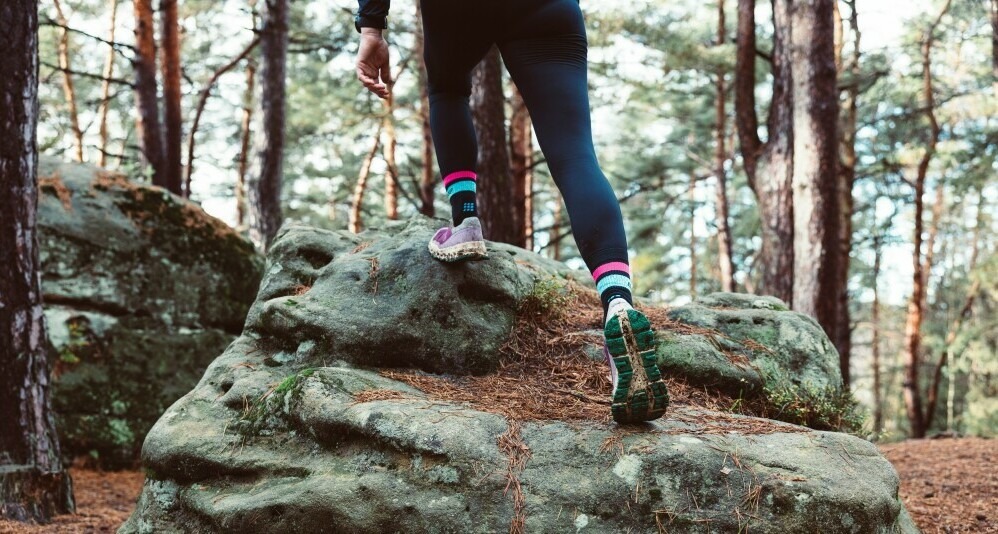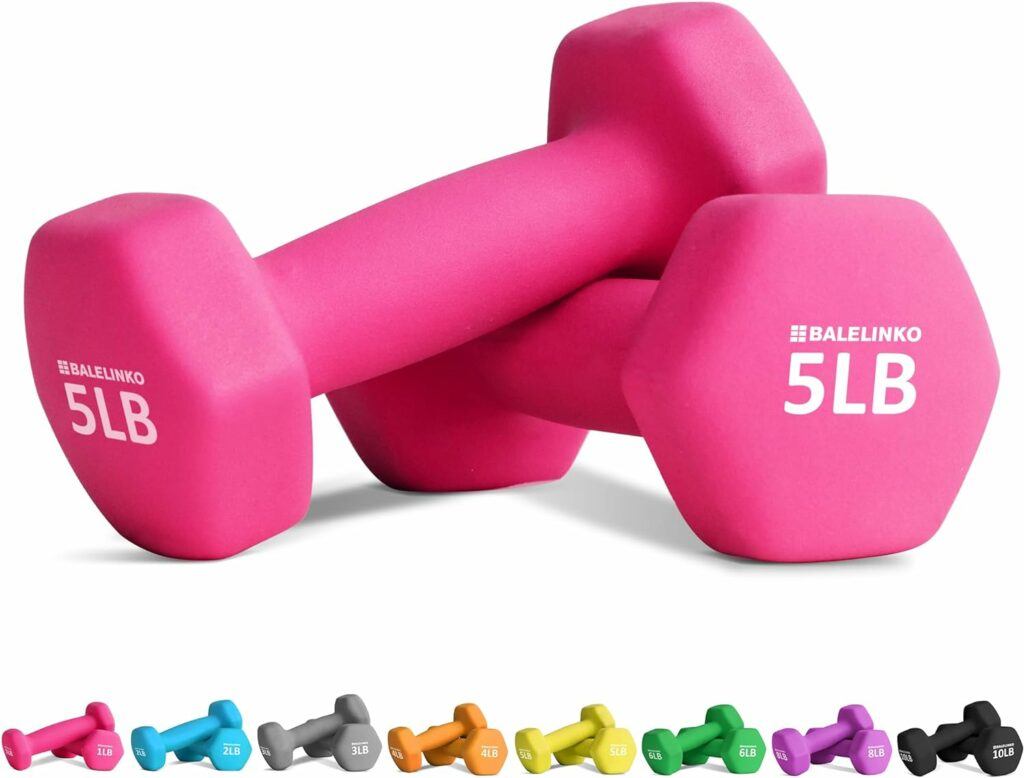Trail running is a fulfilling outdoor exercise and a wonderful way to connect with nature! Having the best trail running shoes for outdoor fitness will make that experience even more rewarding.
Selecting the right trail running shoes is important to ensure your safety as you navigate through rugged terrains. There are distinct features that separate a trail running shoe from your average sneaker – such as grip strength, foot protection, overall comfort, and durability against the elements.
In this article, you will learn the components of a quality trail running shoe and my top 3 recommendations.
{Some of the links in this guide go to my trusted affiliates. You pay nothing extra, and PeakFitnessOutdoors.com may make a small commission. Thank you so much for supporting this website and helping to inspire others to be healthy outdoors!}
The Anatomy of a Trail-Blazing Companion: What Makes a Great Trail Running Shoe
If you’re going to get serious about trail running, it helps to understand the nitty-gritty of what goes into a top-notch trail shoe. These aren’t your standard running shoes. They’re built to tackle roots, rocks, and everything in between. Here are the main parts of a Trail running shoe and what to look for.
1.Tear Resistant Upper
The upper of a shoe consists of all parts or sections of the shoe above the sole and covers your entire foot. You don’t want to run in road shoes on the trail because the material of road specific uppers are not as durable. Many trail shoes are designed with tear-resistant uppers to withstand you hitting rocks, branches and other debris. You want to have the best protection possible for your feet to maintain comfort and safety.
Trail running shoes often come with reinforced toe caps and sturdy materials to protect your feet against potential hazards.
2.Outsoles
The outsole of a shoe, like tire treads, affects grip on surfaces. Trail shoes have deeper lugs than road shoes, enhancing traction. Lugs vary in size, shape, and depth for different terrains.
Shallower lugs suit harder trails, while deeper ones are better for muddy ones. Lug spacing is crucial too: wider gaps prevent mud buildup, ideal for soft trails, while closer spacing provides stability on rocky paths.
The rubber compound should also be durable enough to withstand abrasive surfaces without wearing down too quickly.
3.Midsoles
The midsole of a trail running shoe is important because it provides cushioning and support, absorbing impact and protecting your feet from rough terrain. It also contributes to stability and helps maintain proper foot alignment, reducing the risk of injuries during trail running.
They are often made with EVA foam, which is lightweight and provides a responsive ride, but there’s also polyurethane, which is denser and more durable for rugged trails.
4.Waterproof
And there’s that eternal debate: waterproof or not? Waterproof shoes are great for keeping your feet dry, but they can lack breathability, leading to sweaty feet. On the other hand, non-waterproof shoes offer superior ventilation. It’s about finding what works for you and the conditions you’ll be running in most often.
5.Weight
As for shoe weight, cushioning, and support these can vary widely. A lighter shoe allows for swift movement, while additional cushioning and support can buffer against the relentless pounding of long-distance trails. Ultimately, the best choice depends on personal preference and the type of trail you’ll be taking on.
6.Rock Plate
This sounds like a part that needs to be in a car- not a shoe! 🙂 But certain trail shoes feature a rock plate, positioned between the outsole and midsole, to shield your feet from sharp rocks. It provides added stability and stiffness, ensuring comfort on technical trails and allowing you to maintain pace without fear of injury from rugged terrain.
Top Trail Picks
The best trail shoe for outdoor fitness can make a world of difference between loving your run vs. wanting to get it over with. Here are some recommendations based on the criteria above.
Salomon Speedcross 5: These unisex shoe is known for its aggressive grip, the Salomon Speedcross 5 features a durable Contagrip outsole with deep lugs, providing exceptional traction on various terrains, including mud and loose gravel. Its SensiFit™ technology offers a snug, supportive fit, while the Quicklace™ system allows for quick and easy adjustments on the go. The shoe’s cushioned midsole and protective toe cap ensure comfort and foot protection during long runs over rugged terrain.
Nike Terra Kiger 7: The Nike Terra Kiger 7 excels in versatility and responsiveness. Its lightweight design, combined with Nike React foam cushioning, offers a smooth and energized ride on trails of all types. The shoe’s multi-directional lugs provide reliable traction, while the rock plate embedded in the midsole offers underfoot protection without sacrificing flexibility. The updated upper features breathable mesh and strategic overlays for enhanced durability and support.
Hoka One One Speedgoat 4: Named after ultrarunner Karl “Speedgoat” Meltzer, the Hoka One One Speedgoat 4 is designed for tackling technical terrain with confidence. Its Vibram Megagrip outsole delivers superior grip and traction on wet and dry surfaces, while the oversized EVA midsole provides ample cushioning and shock absorption. The shoe’s wide platform and supportive overlays offer stability and comfort, making it a favorite among trail runners tackling long distances and challenging trails.
These shoes are considered the best for trail running due to their combination of traction, comfort, durability, and performance-enhancing features. They offer reliable grip on various surfaces, protection against hazards, and a comfortable fit for long hours on the trail, making them popular choices among both casual and competitive trail runners.
Lacing Up for the Long Run: Making Your Trail Shoes Last
I’m going to wrap this up with some valuable pointers that’ll help you get the most out of your trail running shoes.
Let’s start with a simple habit: cleaning your shoes after each run. You want to prevent the grit from wearing down the material. Remove the insoles and wash them separately to keep the inside of your shoes fresh and odor-free.
Also, make sure you’re drying your shoes properly. Avoid direct heat sources like radiators, which can warp the shape and degrade the materials. Instead, if you want to speed up drying, stuff them with newspaper. This is a very resourceful and effective method.
If you’ve invested in waterproof shoes, then of course you want to maintain this. Revitalize the DWR (Durable Water Repellent) coating every so often with a spray-on product can make a big difference in performance.
Recognizing when to retire your trail shoes is as crucial as taking care of them. If you’re starting to slip on trails you once tackled with confidence, or you’re feeling every sharp stone underfoot, it might be time to say goodbye. Choosing environmentally friendly ways to recycle or repurpose your shoes reflects your commitment to the trails we all cherish.
Remember, your trail running shoes are your partners on countless adventures. Treat them well and they’ll take you to places that’ll leave you breathless – figuratively speaking, of course. I really hope that these tips will serve you well and keep your outdoor fitness journey remarkable.


